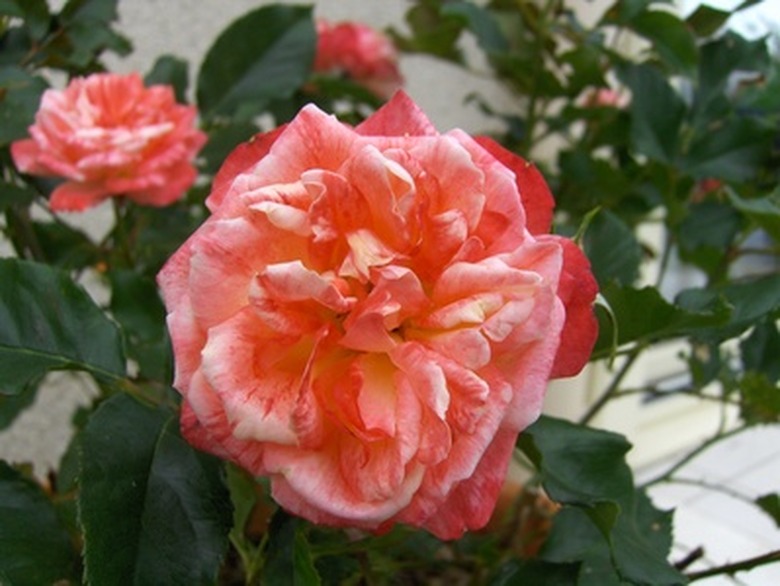Organic Treatment Of Black Spots On Roses
Roses are a popular flower but have many diseases that attack them. One common pest is characterized by black spots. Blackspot is a fungus that can germinate and infect a rose within hours of landing on a wet leaf. There are fungicides for blackspot, but there are also effective, environmentally friendly, organic methods that prevent or control the disease and keep your roses in blooming health.
Blackspot
Circular ebony spots on new rose leaves are the the first sign of a blackspot invasion. If tiny spores carried on the wind from infected foliage or attached to clothing, garden tools, insects, animals or a gardener's hands or gloves land on a wet leaf, they can germinate and penetrate the rose. It's wise to keep pruners and other garden tools disinfected with 3 percent hydrogen peroxide.
- Roses are a popular flower but have many diseases that attack them.
- There are fungicides for blackspot, but there are also effective, environmentally friendly, organic methods that prevent or control the disease and keep your roses in blooming health.
Watering
Blackspot spores need moisture to germinate. The best way to keep your roses healthy is to keep your plants dry. The first line of defense is to water with a soaker or drip hose to prevent splashes on leaves. Gardeners should also water in the mornings. This gives the air and sun all day to dry any wet areas.
Air Circulation
Gardeners can prevent moisture on roses by pruning the plants to allow good air circulation. Especially at full foliage in high summer, prune inside the leaf cover to keep the rose dry. Plant roses well apart. This spacing keeps the air moving to prevent damp areas that can harbor blackspot spores.
- Blackspot spores need moisture to germinate.
- Gardeners can prevent moisture on roses by pruning the plants to allow good air circulation.
Clean Beds
Keep all foliage cleared from rose beds. This stops spores that land on debris from infecting roses though the soil or being splashed onto healthy foliage by rain or watering. Burn debris from infected plants to prevent spores from spreading. If the infection is widespread, all infected cuttings with blackspot's characteristic reddish brown spots should be cut away and destroyed. Completely clean rose beds in the fall as the fungus can overwinter.
Organic Treatments
Prevents spores from germinating by spraying a sulfur solution on the leaves to change the pH. Rose Magazine recommends a home remedy for those who practice organic garden methods. Mix 1 teaspoon baking soda in a quart of water. Add a drop or two of liquid soap to make the solution stick to the leaf surface. Spray infected plants thoroughly.
- Keep all foliage cleared from rose beds.
- Add a drop or two of liquid soap to make the solution stick to the leaf surface.
Manure tea fights fungal diseases while feeding the plant. Put a gallon of well-composted manure into a 5-gallon bucket. Fill with water, stir and let steep in a warm place for three days. Strain it with mesh or cheesecloth. Spray liquid on infected roses and spread the solids on the soil.
Resistant Roses
Plant roses with a natural resistance. To find out which roses are resistant, ask your garden center or read the tags on the roses or information in the catalog. The tag or description should state a cultivar's disease resistances. Or choose a blackspot-resistant All-America Rose Selection winner. AARS cultivars are tested for disease resistance for two years.
- Manure tea fights fungal diseases while feeding the plant.
- Spray liquid on infected roses and spread the solids on the soil.
